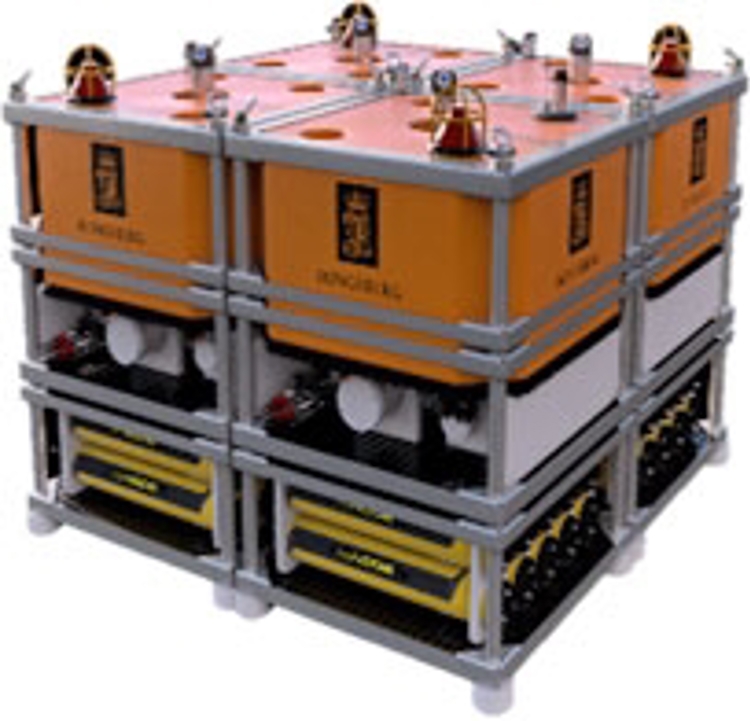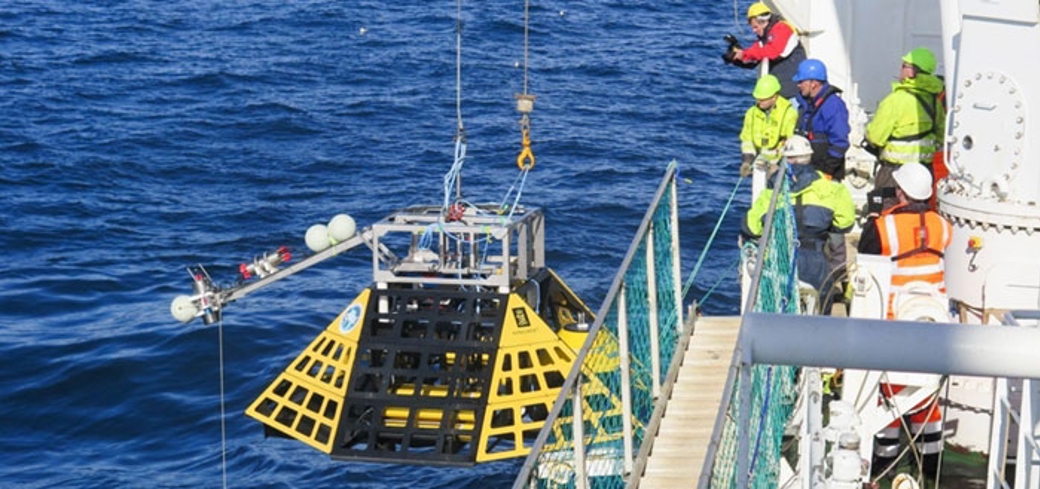
Since the recovery of the CAGE sensor platforms, an innovative effort has been undertaken to further elaborate the design of the K-Lander. With a unique building block concept, consisting of stacking identical support frames to match the needed payload, the K-Lander can be customized and scaled-up to a multitude of long-term subsea monitoring scenarios. The individual modules are then allocated to their specific role in the modular concept (Figure 1):
- Buoyancy module and communication
- Payload section (sensors, batteries or a mix of both)
- Remote-releasable ballast weight
Another design feature of the K-Lander is aimed to improve deployment and recovery by implementing the self-floating buoyancy based recovery system. Instead of employing a rope and buoy, the new K-Lander uses a releasable ballast weight system for recovery, making it independent from cost-intensive recovery equipment like ROVs, Dynamic Positioning (DP) requirement for vessel during winching, and one-off recovery rope cartridges. This design maintains the previous specified standard depth rating of up to 2,000 m (Figure 2).

Whether using Kongsberg sensors or additional third party sensors to monitor the K-Lander utilizes a digital processing unit (DPU), which allows for the connection of up to 10 sensors that are powered by a sophisticated power management system (PMU). Customers will greatly benefit from this advantage of managing and controlling sensor operations as well as collecting and pre-processing sensor data directly on the survey site. For example, intelligent algorithms allow for event-based changes in scheduling and switching between sample scenarios or alerts / notifications. The incoming data is computed within the DPU into a comprehensive environmental model rather than plain data logging, making it quicker and more efficient to act on data received.
Communication between the K-Lander and the surface is based on the Kongsberg Maritime cNODE technology and the proprietary HiPAP Cymbal acoustic protocol for positioning and data link. These well-established technologies ensure confidence that the K-Lander will continue delivering data while deployed for months to years below the surface.
The result of the modular K-Lander Mk2 design is the first standardized, adaptable, and reusable seabed lander solution from the Kongsberg Subsea Monitoring business unit. This approach offers significantly reduced total-cost-of-ownership compared to per-project or custom seabed lander solutions. The team is happy to announce that this design will be available to customers starting in November 2016.
CAGE Background
Two K-Lander observatories from Kongsberg Maritime were deployed offshore Svalbard in the summer of 2015, in an attempt to unveil the secrets of natural release of the climate gas. These are the sites where flares of gas bubbles have been observed, indicating release of methane gas into the water column. The seabed lander systems were placed at the depth of 90 meters and 240 meters respectively.
